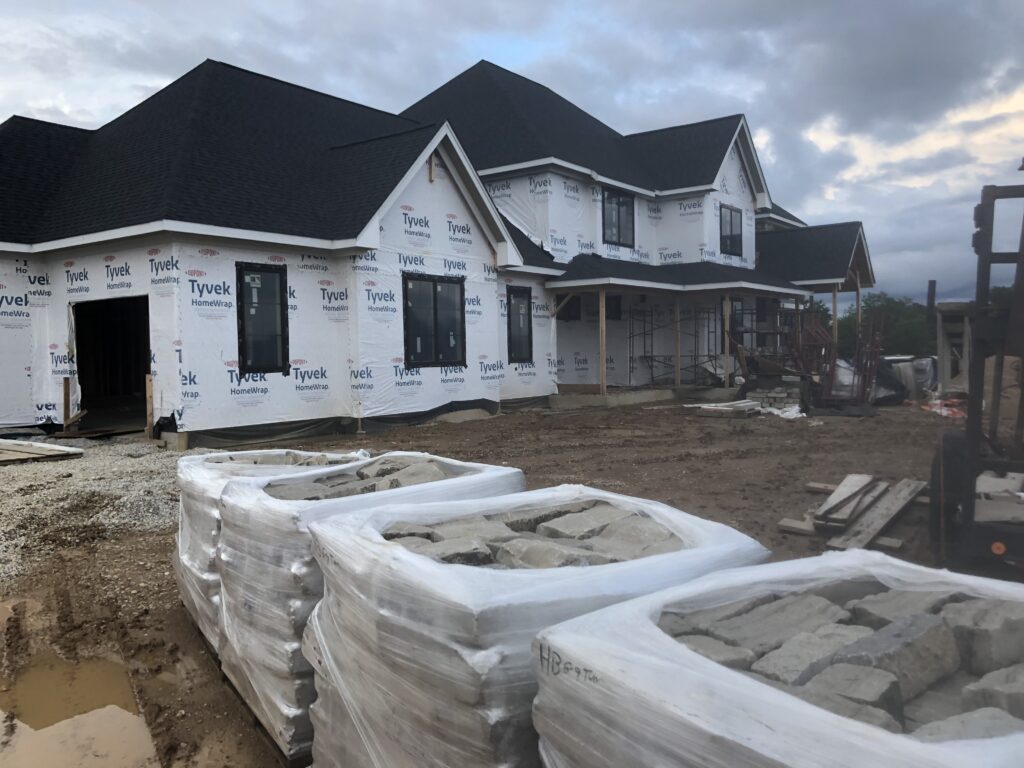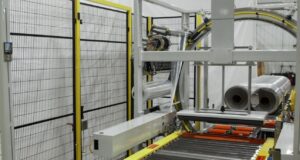
Building materials can present distinct distribution challenges. Whether you’re stretch wrapping concrete blocks, wood panels, flooring, or soft unstable products like bags of sand or cement, the weight and unique shapes and sizes associated with these products amplifies the importance of a properly stabilized load that ensures the retention of product quality and load safety.
When considering stretch wrapping equipment many criteria for selection should be standard – regardless of what you are wrapping. For example, today’s modern stretch wrappers should include a touchscreen HMI with programmed wrap recipes, utilize a material saving pre-stretch film carriage, be built with robust construction, and have readily available technical support and replacement parts availability.
While these features should be a requirement of any machine you select, factors that can come into play when evaluating the suitability of a stretch wrapper for building supplies are:
- Load Weight
- Load Height
- Load Length
- Load Stability
- Load Protection
To accommodate each of these there can be multiple machines that will do the job. But, let’s look at some examples of stretch wrapping systems that lend themselves particularly well to each.
Load Weight – the RTA
When load weight starts to exceed the capability of standard equipment, the options are to choose a beefed-up wrapper or to take weight out of the equation all together by eliminating the turntable or conveyors. The RTA, Rotary Tower Automatic stretch wrapper does just that. The load sits directly on the floor, and the wrappers rotary arm rotates around the stationary load.

Load Height – the Flex LPD
The Flex LPD Window & Door Wrapper is one of the most popular semi-automatic stretch wrappers for large frame items. An adaptation of our standard 5,000-pound capacity Flex LPD, the window & door model handles up to an ultra-tall 120” height. With the extended base and top platen support arm it can also handle up to a 144” swing circle.
Another option for tall loads, is to lay the product flat and treat it as a long load.

Load Length – Orion Orbital Wrappers
Orion Orbital Constellation Stretch Wrappers are ideal for loads that cannot be stretch wrapped on conventional turntable or rotary tower type machines – building supplies including carpet rolls, lumber, siding, flooring, doors & windows.
Orion Orbital’s are fully automatic, loads are sequenced through the conveyors and controlled by photocells and PLC. Powered infeed conveyors move the product horizontally and advance it to the wrap zone. Here photo eye sensors detect load length. The orbital ring and film carriage then rotate around the load, applying the film as the load conveys through.


Load Stability – RTA or MA-DX LoPro
The key to handling loads that are unstable is to reduce movement before or during the wrap cycle. One way to handle the load is with a wrapper, like the RTA, where the load remains in one position on the floor and the rotary arm moves around the load.
If conveyance is a must in your operation, another way of handling these loads is to pair a wrapper like the MA-DX with a drag chain conveyor. The drag chain smoothly conveys the load without the vibration associated with roller conveyors. Once in the wrap zone the load remains stationary while the rotary arm rotates around the load.

Outdoor Protection – Fully automatics with Top Sheet Dispenser (TSD)
When pallets will be stored outside, and the wrapped load needs to remain dry, a top sheet dispenser is an ideal addition to the wrapping process. The MA Series and the FA are commonly integrated with a Top Sheet Dispenser.

When selecting equipment for your building or landscaping products be sure to consider all the properties that can determine the best wrapper for the application. For help in evaluating the best wrapper for your operation, contact Orion@ProMachBuilt.com for assistance.
